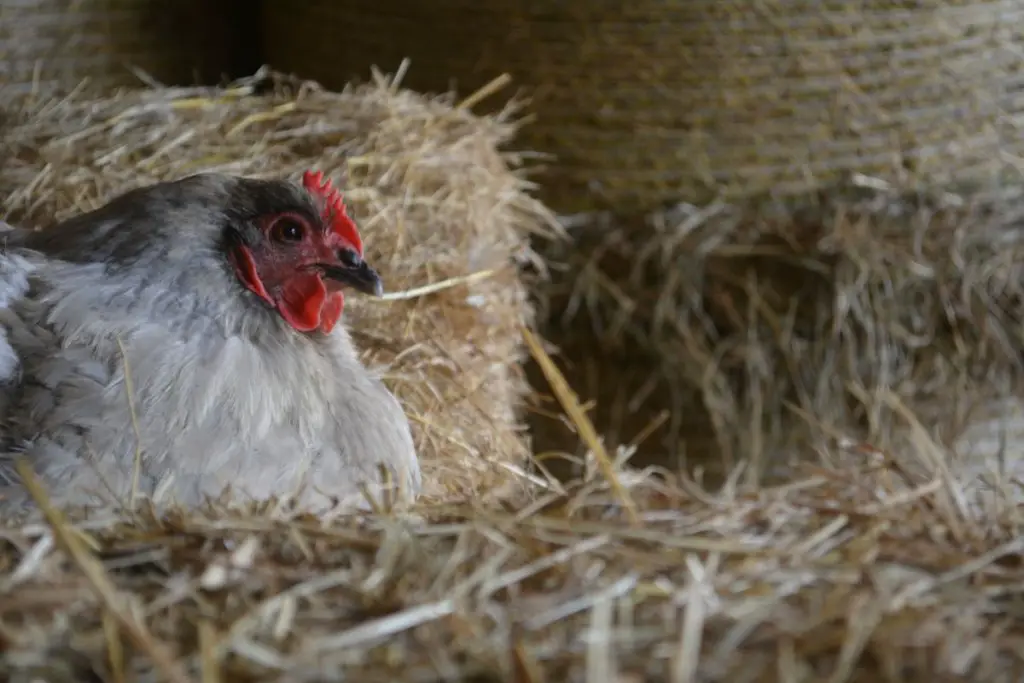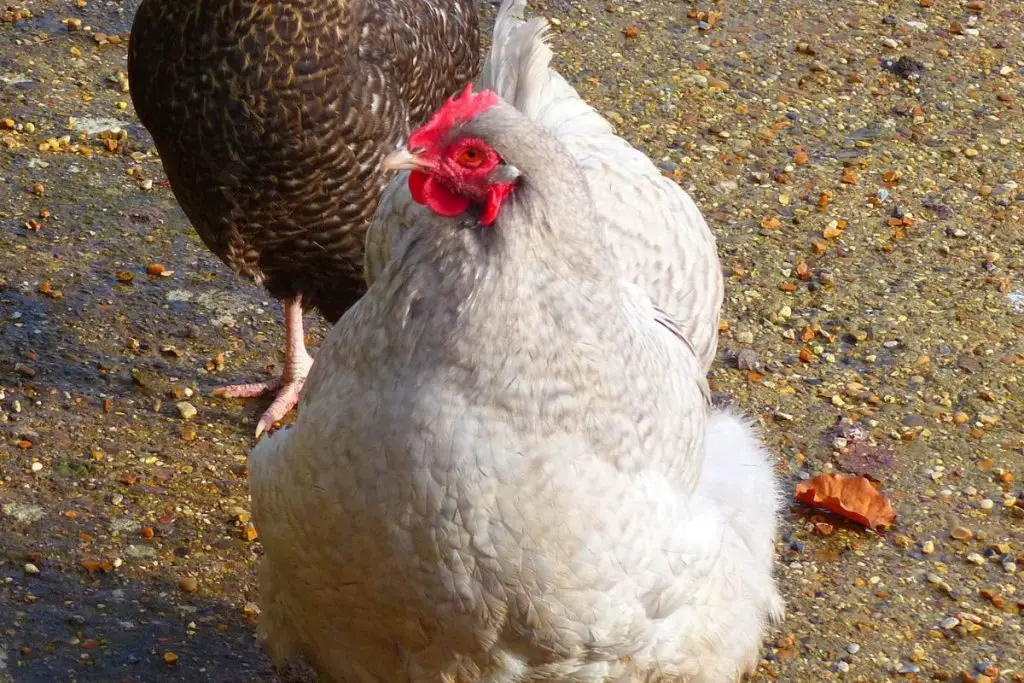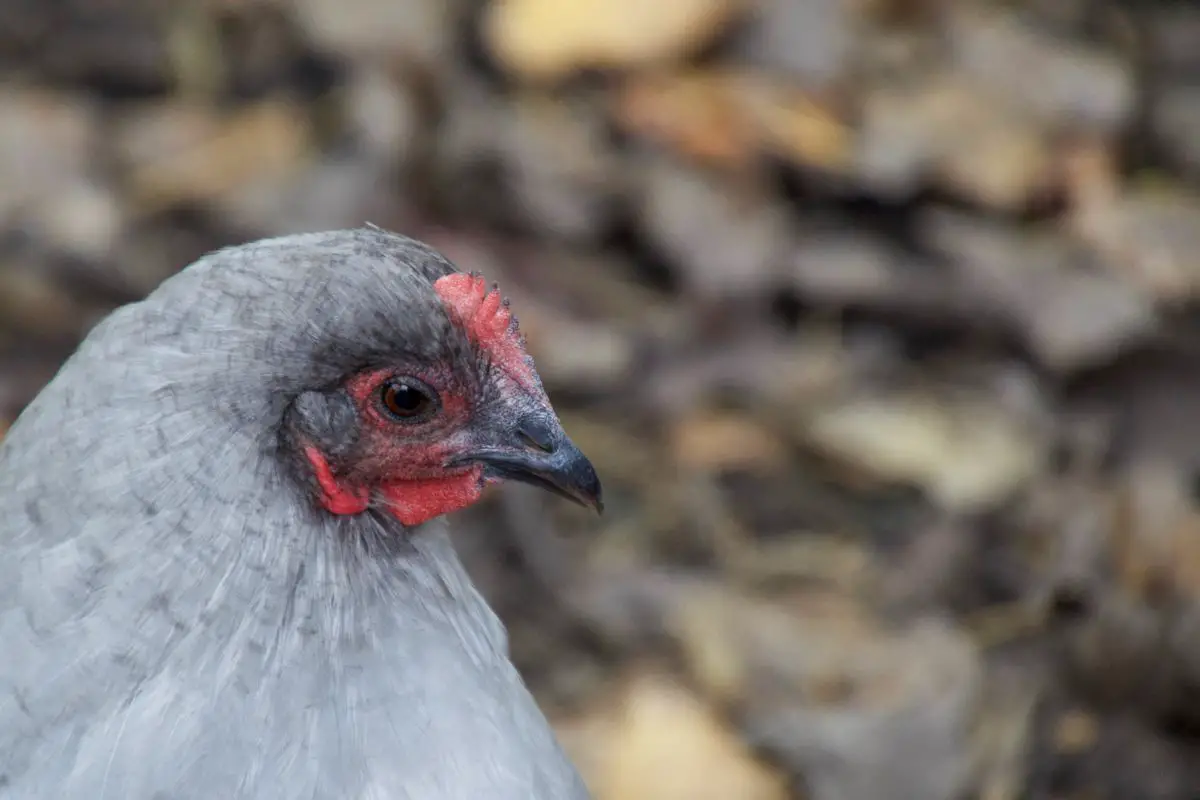Lavender Orpington chicks are a wonderful breed to start or add to any backyard flock, and are ideally suited to cooler climates. They lay around 200 eggs per year and make for excellent family pets.
These lovely birds are also the perfect breed for beginners. And if you are looking for a great urban backyard chicken, you can’t go wrong with the Lavender Orpington chickens.
Lavender Orpington chickens are gorgeous, fluffy, calm, and docile birds with silver-blue feathers with a tinge of lavender color. They are excellent egg layers, even-tempered, and good with kids.
With so many wonderful traits, it’s no surprise this backyard chicken breed has become so popular.
But as chicken lovers, we sometimes get so excited about certain breeds that we jump into buying them before we consider what we are getting ourselves into. Lavender Orpington chickens are delightful birds to raise but they can become challenging if you don’t meet their care needs.
If you’re interested in raising Lavender Orpington chickens, here are a few factors to consider before buying them:
Table of Contents
1. Time Commitment
Lavender Orpington chickens require a lot of time and effort every day. You need to feed and water them, clean their coop, collect their light brown eggs, observe them, and spend some quality time with them every day.
Depending on the size of your flock, you may spend up to an hour every day feeding them. Yes, they have a far more demanding diet than most other chickens.
Depending on how many Lavender Orpington chickens you raise, you may spend a lot of time collecting and storing eggs too. After all, they lay around 200 eggs per year with their egg color typically being light brown.
Cleaning their coop will also take a lot of time as their chicken coops must be kept cleaner than other breeds. The time you spend cleaning your chicken coop will depend on its size and the number of chickens you keep but allow for 30 to 60 minutes per week.
You‘ll also want to consider how often you leave them alone since they don‘t like being left alone for too long. Consider how often you stay away from home and make sure there is someone to take care of your flock.
2. Coop Setup
Lavender Orpington chickens are large birds, so they need a lot of space. Each bird will need 12 sq. ft. of coop space, especially if you want to mix them with more aggressive breeds. This will give them enough space to avoid bullying other chickens which may prevent them from eating.
Despite their massive size, Lavender Orpingtons are calm and docile. This means they are low in the pecking order. However, more assertive chickens can peck at them, so keep a close eye for signs of bullying and pecking.

When it comes to nestling space, each chicken will need at least 10 inches of space. Keep in mind that these are large, fluffy chickens so they need a lot of space. And since they are so big, you should place perches near the floor to prevent leg injuries while jumping off their perch.
The average 12″x12″ chicken nesting box may be too cramped for your Lavender Orpingtons, so you may want to provide them with a relatively bigger nesting space, such as a box or a crate.
Although the Orpington breed enjoys roaming and foraging, they do so leisurely. These delightful ladies are in no hurry unless they see you shaking their treat bag.
Orpingtons tend to be lazy. So place water troughs and feeders far from their roosting area. That way, they will be able to stay active. Remember Orpingtons are prone to obesity, so you will need to monitor their weight since overweight chickens can suffer from many other health problems.
3. Climates
Lavender Orpington hens are not the best chicken for hot climates because of their thick feathers. To avoid heatstroke, you will need to keep them cool by providing them with deep shade.
They are cold tolerant, but you will need to protect their comb from frostbite. Provide them with a ventilated shelter and plenty of water if you live in a very warm area.
If you get the temperature right, your Orpingtons will get the nutrition and warmth it requires to grow at a steady rate. A chick that is too hot can pant and squeeze itself in the furthest corners of the coop.
On the other hand, a chick that is too cold may not eat. It can huddle with others, often keeping its eyes shut.
Do not mistake this for sleeping. Sleeping chickens may drop to the ground and lie with their neck, head, and probably legs and wings outstretched.
4. Feeding
Lavender Orpingtons absolutely love food. Ideally, you should provide them with well-balanced and high-quality chicken feed. These are available in crumbled, mashed, and pellet forms.
For Orpington chickens, you’ll need to start with a high-quality chicken starter until they are aged around 18 weeks.
After that, you can provide your pullets with layer feed or pellets. These are rich in protein and provide them with enough calcium to harden their eggshells.
You can also supply them with crushed oyster shells in separate feeders to supplement their calcium intake. If you have other chickens in your flock, supplying them with an all-purpose chicken feed with less calcium content is recommended.
Foraging birds will also supplement their regular diet with seeds, insects, and leafy plants.
It is also a good idea to treat your Orpingtons to tasty snacks from time to time. Some healthy snacks for these birds include mealworms, pasta, cucumbers, lettuce, strawberries, and watermelon. However, treats must not account for more than 10 percent of their regular diet.
Once again, Orpingtons are big birds that are prone to obesity. If your lavender Orpingtons do not free-range, you’ll need to provide them with enough space to scratch and roam around the chicken yard to avoid obesity.
Another important part of their diet is fresh water. You should ensure your Lavender Orpingtons have constant access to fresh water. Their health will depend on a constant supply of clean and fresh water. You must provide enough water depending on the demand of your flock.
5. Predators
Orpingtons are not the savviest free-range chickens. Although they are good at foraging, they do not fly well.
Orpingtons are also quiet birds and hardly make any noise. In addition, they are not good at protecting themselves from predators. It’s easy to lose chicks or chickens to predators.

Your broody hens and their chicks can be attacked by stoats, hedgehogs, rats, dogs, and feral cats, so keep your Lavender Orpingtons in a secure place to protect them from predators. A coop with sturdy wire mesh should keep them safe.
6. Health Concerns
Lavender Orpingtons are hardy birds with very few health problems. However, they need to be treated for mites, lice, and worms, and checked for health issues such as an impacted crop, spraddle leg, and bumblefoot.
Since they are heavily feathered, Orpingtons are prone to heatstroke in very high temperatures. Constant access to shelter or a shade that can provide them with a cool environment is crucial. Plus, constant access to clean, fresh drinking water will also help keep them cool.
Again, these heavy birds can gain excess weight. Therefore, it’s recommended to keep food and water at a reasonable distance to give them some exercise.
For the same reason, supplying your Orpingtons with homemade chicken toys is a good idea.
7. Upfront Cost
If you are looking for Lavender Orpington chickens, you also need to consider their cost and availability.
You see, Lavender Orpingtons are widely sought-after and can be rare to find. This makes them more expensive than typical backyard chickens.
Lavender Orpington pullets from a reputable hatchery can go for up to $30. From reputable breeders, however, you can buy hatching eggs or chicks for up to around $5 to $15 per egg or chick.
Like other animals, raising these chickens costs money. They need food, coop, brooder, feeders, waterers, bedding, and treatment. You will need to buy their food regularly, plus materials to set up the coop and pay for medicine and vet check-ups.
8. Sourcing a Breeder
Ideally, you should source Lavender Orpington chickens from a trusted hatchery that has experience breeding baby chicks.
You can find many hatcheries online or you may find someone who has already started and is ready to sell pullets in your area.
As they can be in short supply, try asking your friends and colleagues with hens or search in advertising publications. You could also visit a nearby poultry club and ask around if anyone is breeding these chickens.
Bottom Line
Lavender Orpington chickens are easy to raise, but you need to prepare yourself before adding them to your home. If you want chickens with good egg laying potential for the next few years and you live in a cooler climate, then the Lavender Orpington breed is the way to go.
Many people choose these birds because of their docile and friendly nature. However, before buying Lavender Orpington chickens, make sure to consider the above factors. You should have enough space to keep them as well as enough resources to meet their basic needs.
If you can’t find a trusted breeder, you can consider other varieties of Orpington chickens. Their main difference is their color, which doesn’t influence their egg production and care requirements.
So, provided you have the time and resources to take care of more animals, then Lavender Orpingtons can be a welcome addition to your family.

